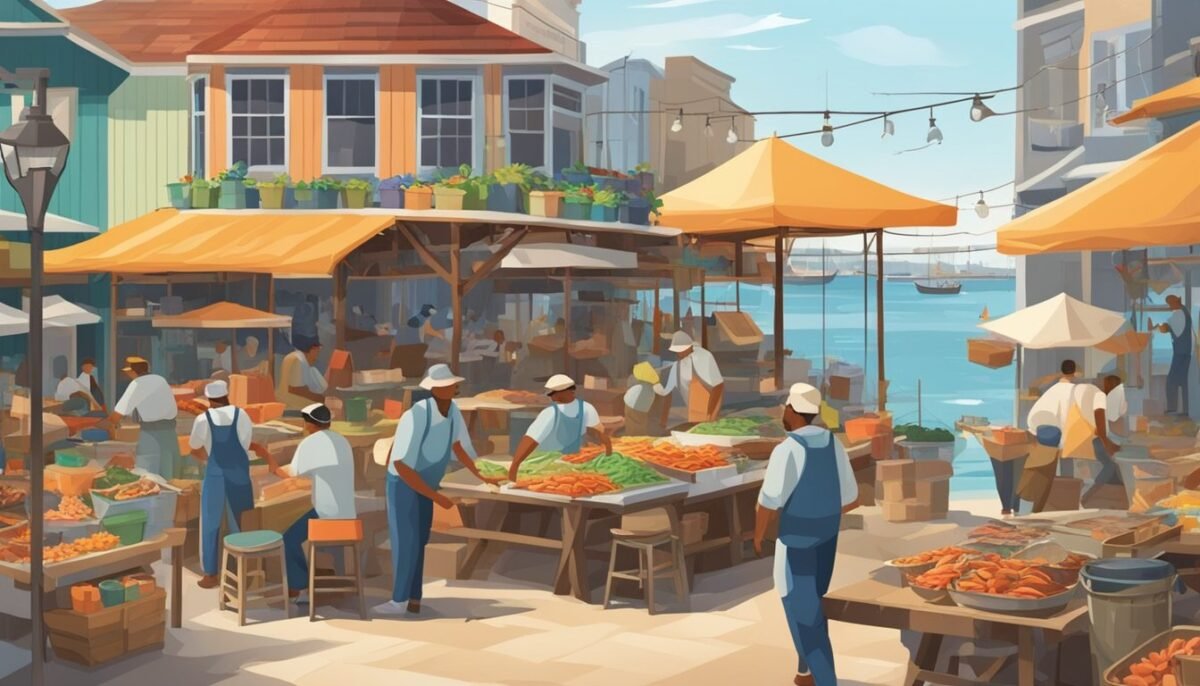The fusion of fresh seafood markets and dining experiences has led to a niche trend in the food industry: market cafes. A Crab Catcher’s Market Cafe exemplifies this trend, serving as both a supplier of fresh crabs and a culinary destination for sea-to-table dining. This type of establishment caters to consumers seeking transparency, freshness, and a connection to their food’s source. It combines the allure of freshly caught seafood with the convenience and enjoyment of immediate preparation and consumption within an inviting atmosphere.

Embarking on the creation of a Crab Catcher’s Market Cafe requires meticulous planning and a deep understanding of the seafood industry, along with local food regulations. It’s a business model that appeals to consumers’ growing interest in sustainability and the locavore movement, which prioritizes locally sourced eats. As people become more interested in where their food comes from and how it is caught or grown, market cafes stand out by offering a transparent, educational, and engaging food acquisition and consumption experience.
The essence of a Crab Catcher’s Market Cafe centers around the procurement, presentation, and preparation of crabs. Sourcing quality crustaceans directly from crabbers or through sustainable fisheries bolsters the cafe’s reputation for quality and ethical practices. The cafe’s layout and design need to accommodate both the market and dining areas, ensuring a seamless operation that upholds health and safety standards while also creating a welcoming environment for guests. Such a venture thrives on strong supplier relationships, adept culinary techniques, and a keen business acumen to navigate the unique challenges of the seafood market and restaurant industries.
Conceptualizing the Market Cafe
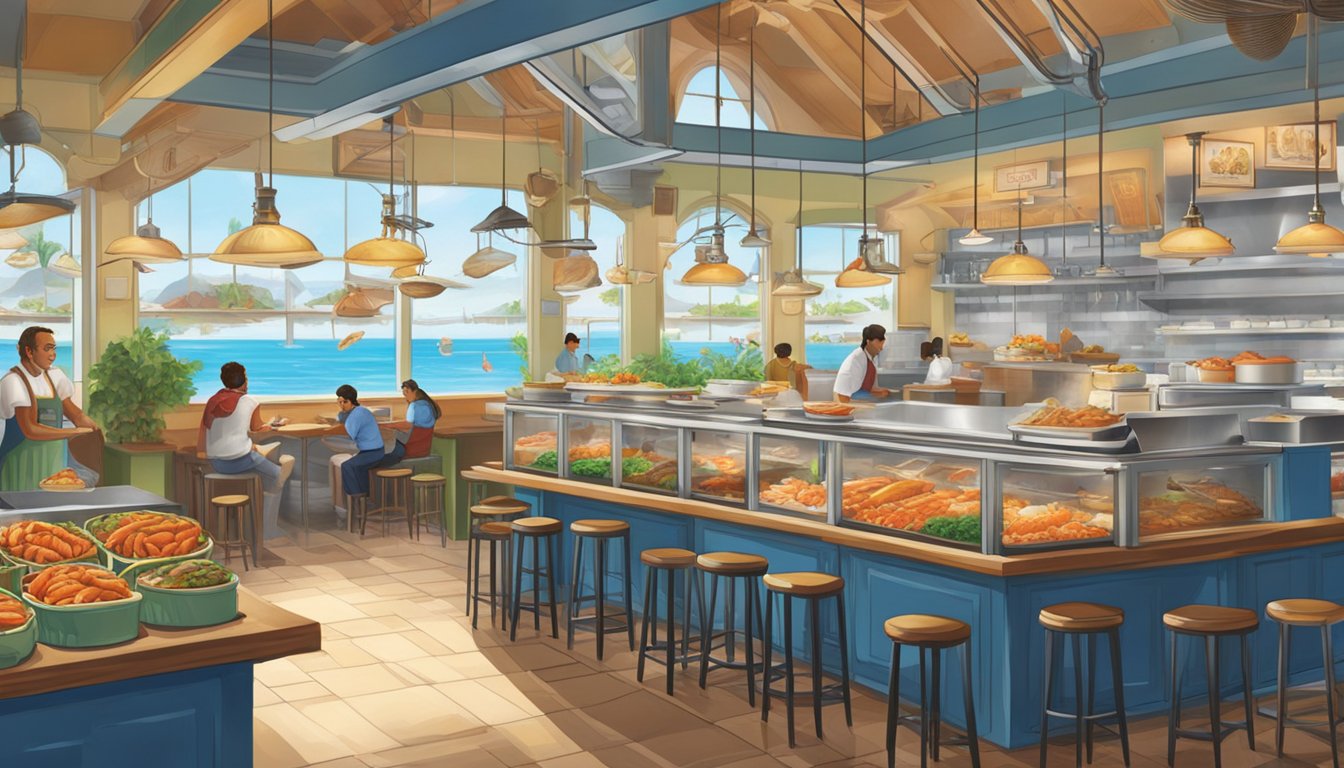
Successful establishment of a Crab Catcher’s Market Cafe hinges on meticulous planning focusing on a specific target market, a well-conceived menu, and a strategic location.
Identifying Target Market
The target market defines the potential customers likely to patronize the cafe. Research indicates two primary groups: seafood enthusiasts and local dining adventurers. Seafood enthusiasts are drawn to fresh, high-quality catches, whereas local dining adventurers seek unique, authentic experiences. A comprehensive understanding of these groups dictates marketing strategies and menu design.
Determining Menu Focus
The menu should highlight locally sourced crabs and seafood-based dishes. Incorporating seasonal specialties can innovate the offerings, such as:
- Soft-Shell Crab (Spring)
- Stone Crab Claws (Fall/Winter)
The menu emphasis is on:
- Freshness: Ensuring crabs and ingredients are sourced daily.
- Simplicity: Crafting dishes that respect and showcase the natural flavors.
Assessing Location Viability
The selection of a location is critical. Key considerations include:
- Foot Traffic: Areas with high visibility and natural flow of potential customers.
- Proximity to Source: Being close to the crabbing waters reduces transportation costs and supports freshness claims.
- Competition: An area with few direct competitors but complementary businesses will be most advantageous.
Accessibility and parking availability are also vital factors in location assessment.
Business Planning
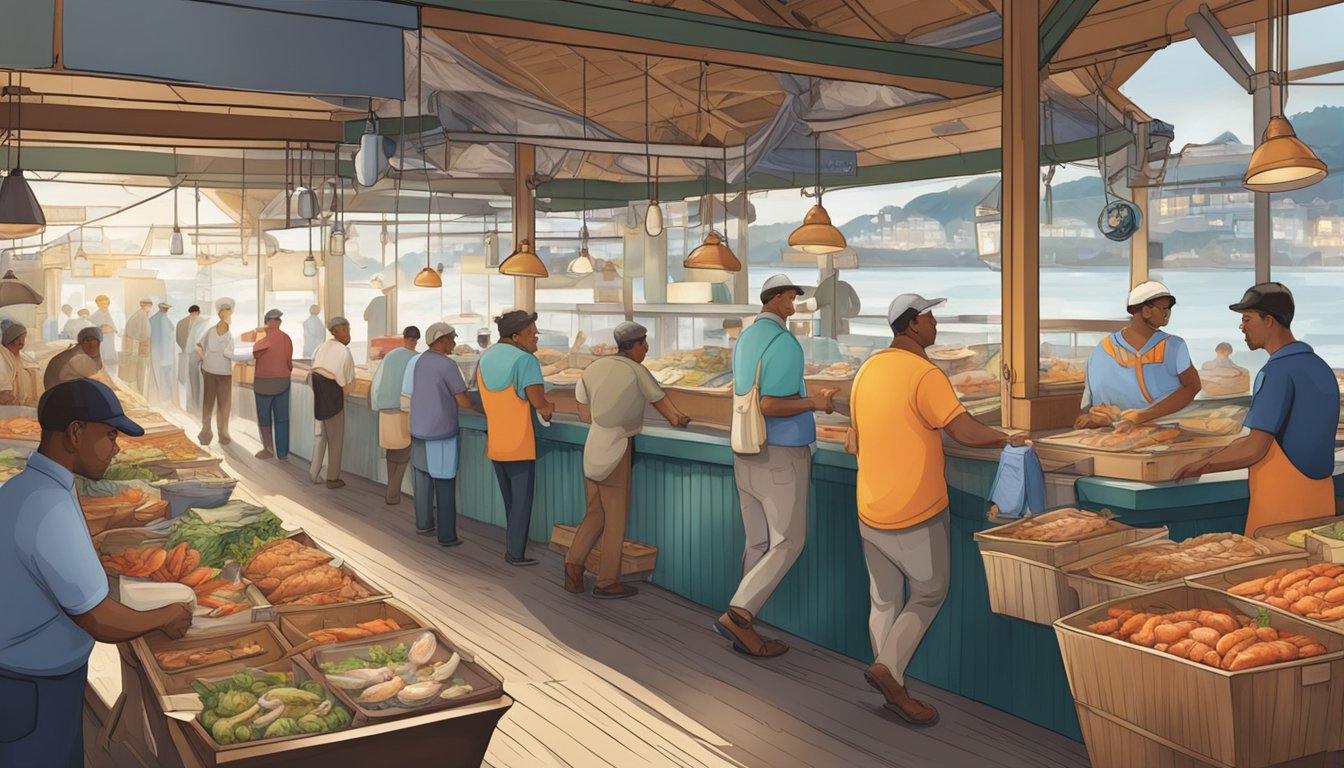
In starting a Crab Catcher’s Market Cafe, meticulous business planning is critical for managing resources and understanding the market landscape.
Creating a Business Model
The business model for a Crab Catcher’s Market Cafe must clearly define the cafe’s value proposition, revenue streams, and cost structure. It should outline how the business will operate, detailing the services offered, such as fresh crab sales, dining, and takeout, and any unique selling points that distinguish it from competitors. Consider using a Lean Canvas to structure the model, summarizing key components such as customer segments, channels, and key metrics.
Conducting Market Analysis
Market analysis involves researching the external environment where the cafe will operate. They must assess the demand for crab-related products and dining, analyze competitors, and identify target customer demographics. A SWOT analysis (Strengths, Weaknesses, Opportunities, Threats) is useful in understanding the competitive landscape and potential challenges.
Drafting a Financial Plan
The financial plan should provide a comprehensive overview of the capital required, projected revenues, and expenses. A detailed break-even analysis can illustrate the point at which the cafe will become profitable. A table displaying the key financial projections such as sales forecasts, costs, and net profit margins over the first three years can give a clear financial trajectory of the business.
| Year 1 | Year 2 | Year 3 |
|---|---|---|
| Projected Sales | $X | $Y |
| Costs | $A | $B |
| Net Profit Margins | Z% | W% |
Effective planning will pave the way for a successful launch and sustainable operation of the Crab Catcher’s Market Cafe.
Regulatory Compliance
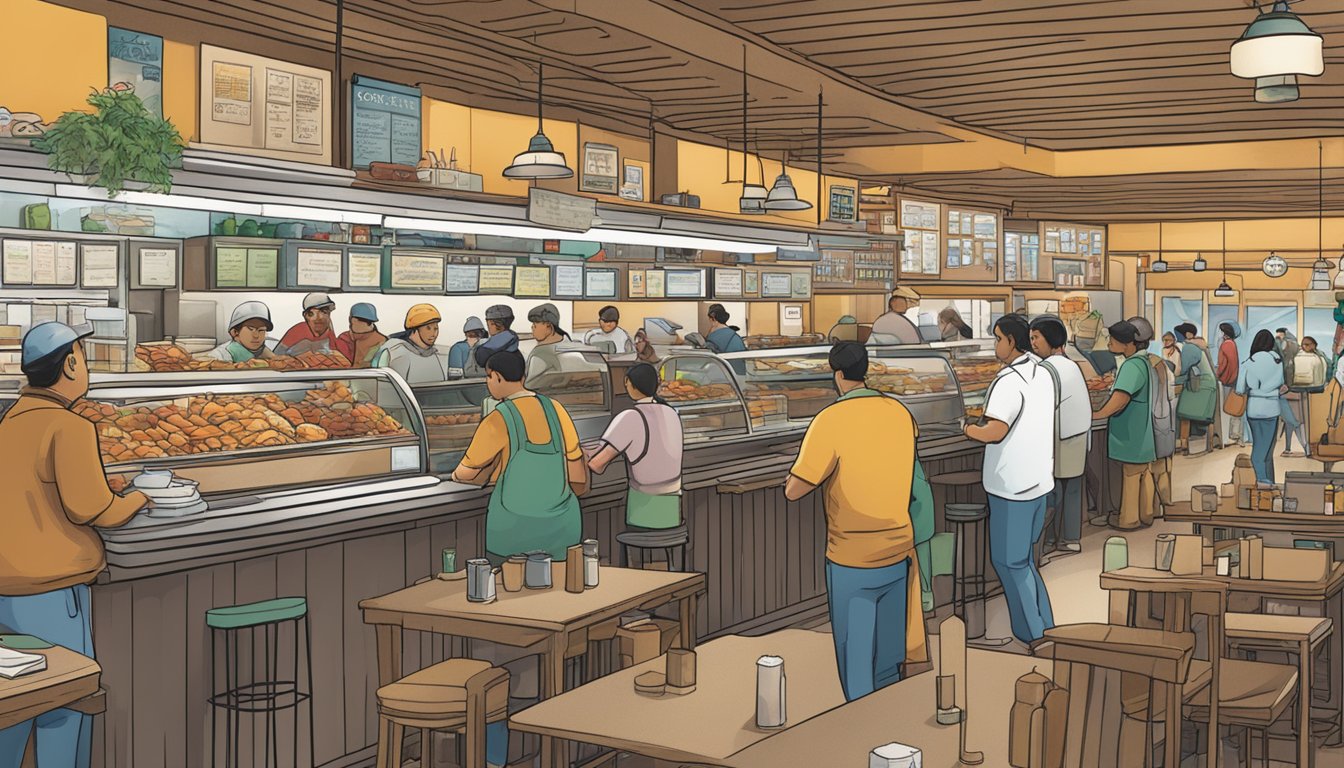
In establishing a Crab Catcher’s Market Cafe, adherence to regulatory requirements is crucial for lawful operation and ensuring public safety. Compliance encompasses obtaining the necessary permits and licenses, as well as understanding and implementing food safety standards.
Securing Permits and Licenses
- Local Business License: The first step is to obtain a local business license from the city or county. Requirements vary by region, so it is important to contact the local government for specific information.
- Health Department Permit: A Health Department permit is required to ensure the cafe meets health codes and regulations. Regular inspections will be conducted to maintain this permit.
- Seafood Dealer License: If the cafe involves selling seafood directly to the public or other businesses, a Seafood Dealer License may be required.
- Alcohol License (if applicable): Serving alcohol requires an additional permit, and compliance with local, state, and federal laws is mandatory.
Understanding Food Safety Standards
-
Food Handler’s Permit: All personnel involved in food preparation must possess a Food Handler’s Permit, demonstrating they understand how to handle food safely.
-
Hazard Analysis Critical Control Point (HACCP) Plan: Implementing a HACCP plan is critical to preventing foodborne illness. This includes monitoring several critical points from crab catching to serving.
Critical Control Points Measures Receiving Live Crabs Temperature checks and supplier validation Storage Proper refrigeration at or below 40°F (4°C) Preparation Cross-contamination prevention and hand hygiene Cooking Achieving the correct internal temperature Serving Maintaining food at safe temperatures
Adherence to these regulations not only ensures the safety and satisfaction of customers but also solidifies the reputation of a Crab Catcher’s Market Cafe as a dedicated and responsible establishment in the food service industry.
Design and Construction
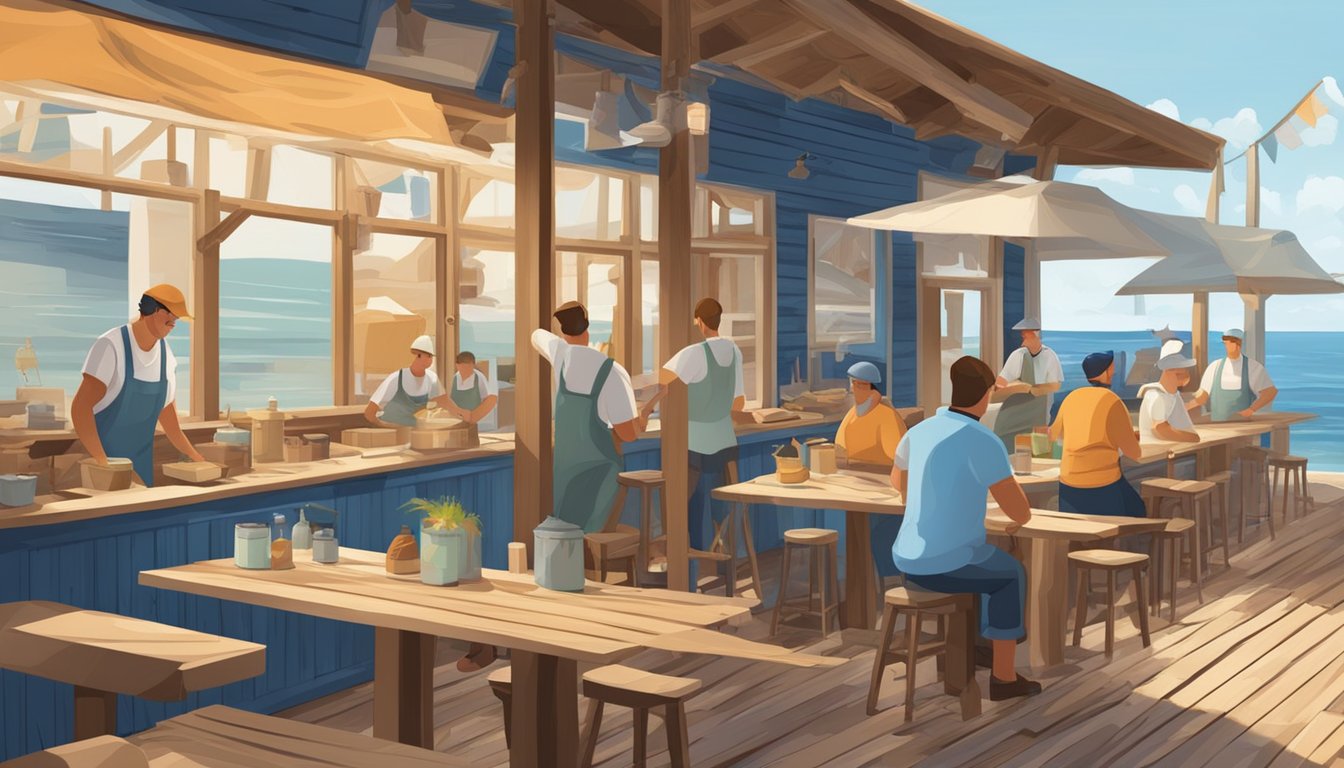
The successful establishment of a Crab Catcher’s Market Cafe hinges on three essential components: a coherent design aesthetic, efficient cafe layout, and the engagement of reliable builders and suppliers.
Choosing a Design Aesthetic
Selecting a design aesthetic for a Crab Catcher’s Market Cafe is critical as it shapes the customer’s experience. A nautical theme with blue and white hues and weathered wood accents often resonates with such an establishment, evoking the spirit of the sea. Including elements such as ropes, nets, and maritime artifacts can reinforce the thematic experience.
Planning Cafe Layout
A practical cafe layout ensures seamless operations and a pleasant dining environment. Key areas to focus on include:
- Kitchen: This space must be designed for efficiency with clear sections for prep, cooking, and plating.
- Dining Area: Arrangement should allow for comfortable seating while maximizing space utility.
- Counter Space: Essential for display and transactions; it should be easily accessible from the entrance.
The goal is to create a flow that supports both staff efficiency and customer comfort.
Contracting Builders and Suppliers
Securing reputable contractors and suppliers is indispensable for quality construction and timely completion. One should consider:
- Builders with a Proven Track Record: Experience in restaurant design and construction is preferable.
- Reliable Suppliers: They must provide quality materials in line with the chosen aesthetic and within budget constraints.
By meticulously selecting builders and suppliers, one can ensure a build that’s both aesthetically pleasing and functional.
Sourcing and Operations

Effective sourcing and operations are critical for the success of a Crab Catcher’s Market Cafe. They require strategic planning in supplier relationships, equipment procurement, and supply chain management.
Developing Supplier Relationships
Building strong, long-term relationships with crab suppliers ensures a steady stream of fresh products. Important factors to consider include the supplier’s:
- Reputation for sustainability and ethical fishing practices
- Ability to provide a consistent quality and quantity of crabs
Procuring Crab Catching Equipment
To catch crabs efficiently, the cafe will need to procure the appropriate equipment. Necessary items include:
- Crab pots and traps – durable and suitable for the local crab species
- Buoys and lines – must withstand various weather conditions
- Personal protective gear – for the safety of the crew
Creating a Supply Chain Strategy
A robust supply chain strategy is essential for timely delivery and reducing waste. Key components include:
- Inventory Management: Track stock levels to prevent shortages or overages.
- Transport Logistics: Optimize routes for speed and cost-effectiveness while ensuring live crabs arrive in optimal condition.
- Vendor Coordination: Synchronize with all parties involved to maintain a smooth workflow.
Marketing and Branding
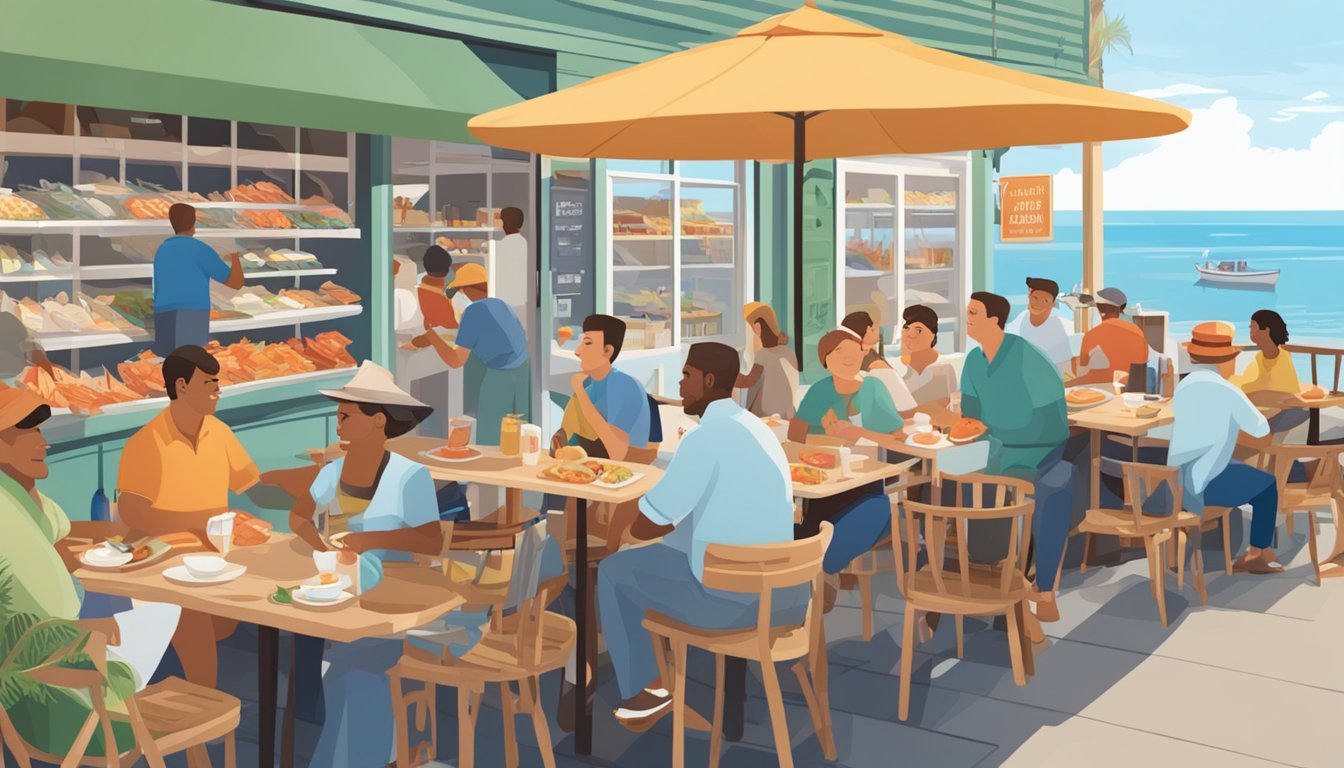
Effective marketing and branding are crucial for the success of the Crab Catcher’s Market Cafe. They establish the restaurant’s unique identity and foster a connection with the target audience.
Building Brand Identity
The foundation of the Crab Catcher’s Market Cafe’s brand identity is its distinctive marine-inspired theme which capitalizes on a color palette reminiscent of the sea, and decor that echoes the lifestyle of crab catchers. Important elements include:
- Logo: A stylized crab or net, capturing the essence of the brand.
- Uniforms: Employees’ attire reflects the nautical theme.
- Packaging: Takeout containers utilize the brand’s colors and logo.
Developing a Marketing Strategy
Developing a multi-faceted marketing strategy involves traditional and modern approaches, tailored to highlight the unique selling proposition of the Crab Catcher’s Market Cafe. Key components include:
- Local Advertising: Newspapers and local radio spots feature the fresh, locally-sourced menu.
- Partnerships: Collaborations with local fishermen and marine events promote brand visibility.
- Promotions: Special discounts for community members, like “Fishermen Fridays,” offer incentives to specific groups.
Leveraging Social Media
Social media can be a powerful tool to reach the Cafe’s audience and create engaging content that resonates with crab enthusiasts and food lovers alike.
- Visual Content: High-quality images of dishes and behind-the-scenes fishing trips on Instagram.
- User Engagement: Encouraging patrons to share their experiences using a specific hashtag.
- Reviews and Testimonials: Spotlighting positive reviews on social media platforms and the restaurant’s website.
By carefully curating these strategies, the Crab Catcher’s Market Cafe can develop a strong market presence and attract a loyal customer base.
Opening Preparation
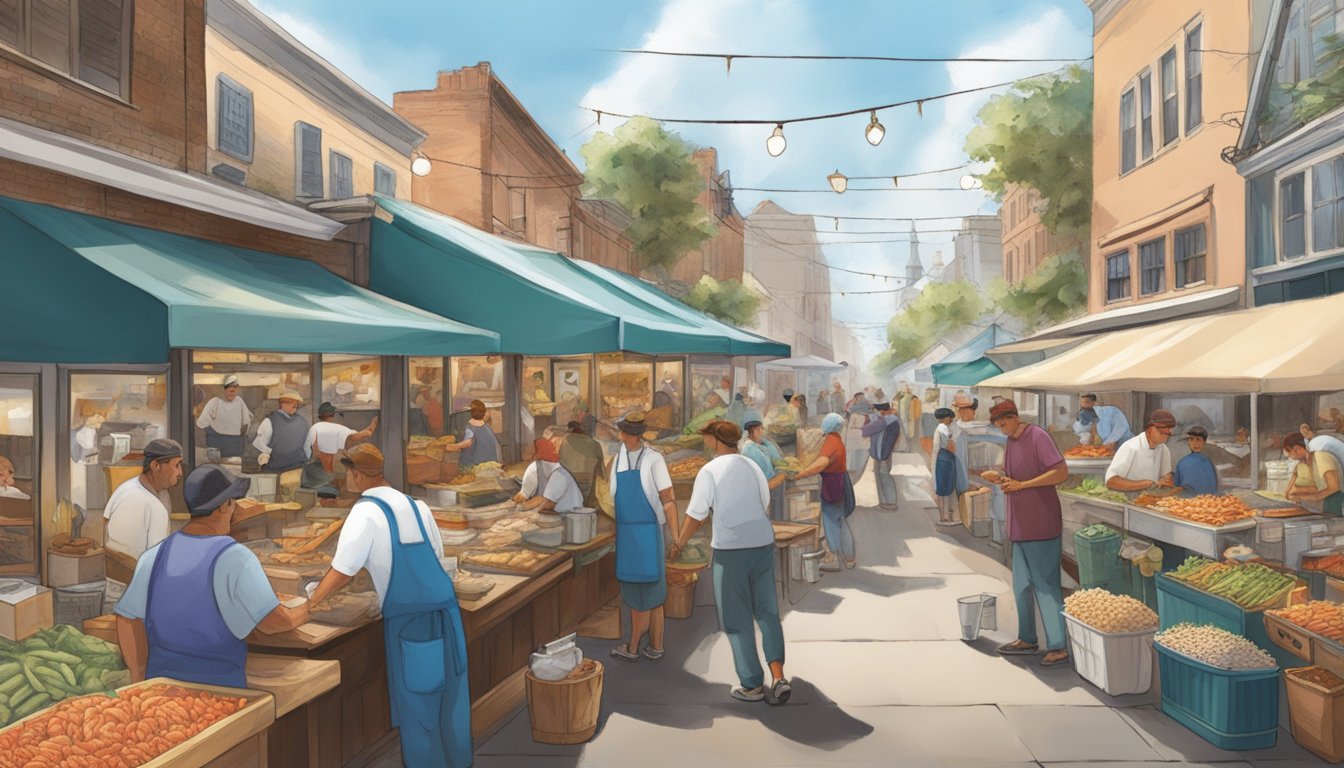
The success of a Crab Catcher’s Market Cafe hinges on meticulous preparation in three critical areas: staffing, dining space configuration, and kitchen operations.
Hiring and Training Staff
Employment ads should be specific about skill requirements and workplace expectations. For example, ads might state, “Experienced seafood chefs needed for bustling Market Cafe,” and highlight the need for knowledge in handling and preparing crustaceans.
Training Protocols:
- Safety: All staff to complete seafood handling and kitchen safety courses.
- Service: Role-specific training, with waitstaff practicing menu knowledge and customer engagement.
| Role | Required Skills | Training Focus |
|---|---|---|
| Chefs | Seafood preparation | Crab cooking methods |
| Waitstaff | Customer service | Menu knowledge |
| Bartenders | Mixed drinks expertise | Signature cocktails |
| Janitorial | Cleaning and sanitation | Maintenance routines |
Setting Up the Dining Area
The dining area should evoke a nautical theme to complement the seafood offerings. Tables should be arranged to optimize flow and maximize seating without crowding.
Seating Arrangement:
- Tables: Maintain at least 36 inches between table edges to ensure comfortable guest passage.
- Lighting: Overhead and table lighting should be bright enough to see the food but soft enough to create a pleasant ambiance.
Organizing Kitchen Workflow
An efficient kitchen is segmented into clear zones for preparation, cooking, and plating. The layout must support a seamless flow from the moment crabs are brought in until dishes are served.
Kitchen Zones:
- Prep Area: Equipped with cutting boards, sinks, and storage for utensils.
- Cooking Station: Dedicated steamers for crabs and a range for other menu items.
- Plating Counter: Strategically positioned to receive prepared dishes for garnishing and prompt service to the dining area.
Implementing a first-in-first-out (FIFO) inventory system ensures the use of the freshest ingredients and minimizes waste.
Launch and Growth
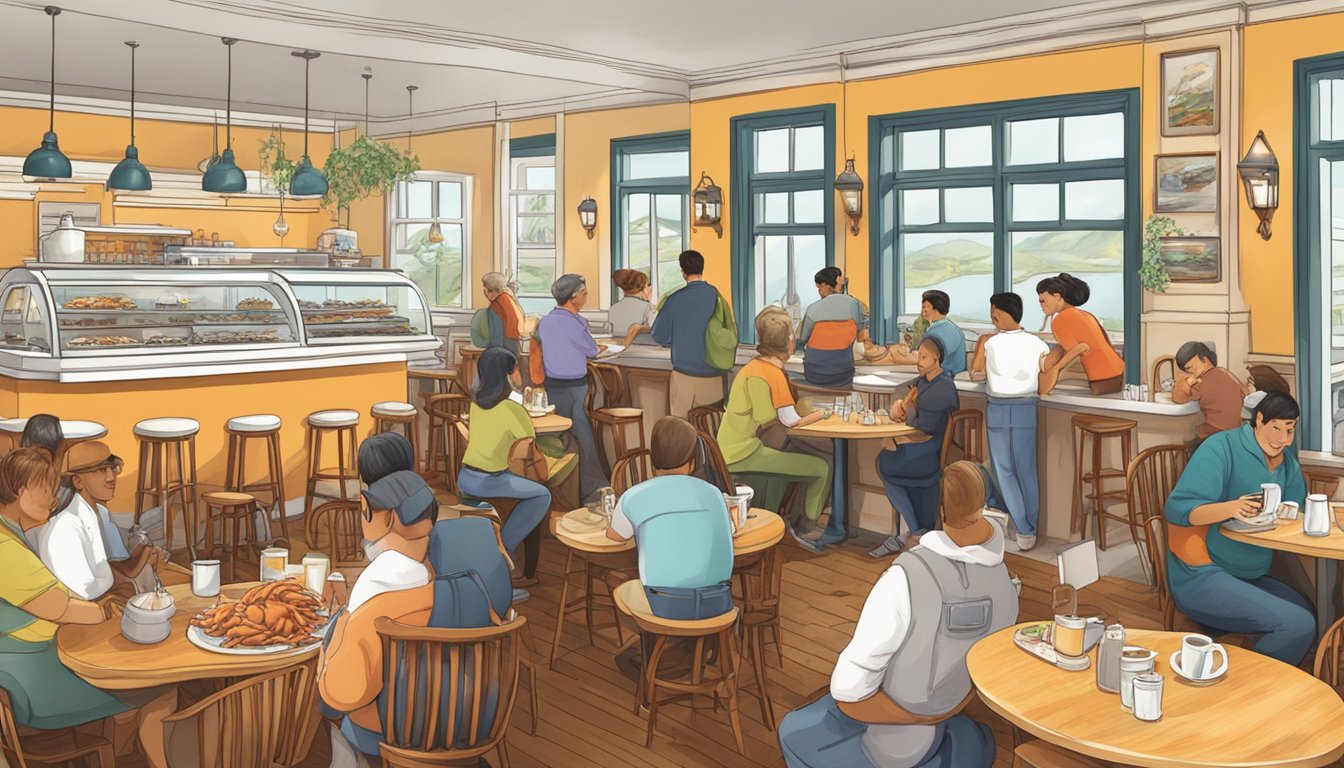
Launching a Crab Catcher’s Market Cafe successfully hinges on meticulous event planning, attentive customer feedback analysis, and strategic market presence expansion.
Planning a Launch Event
- Date and Time: Selecting a date and time with minimal competing local events maximizes potential attendance.
- Venue: Securing a space that resonates with the brand’s maritime theme underscores authenticity.
- Promotion: Utilize local press, social media, and flyers to ensure event visibility.
- Sponsorships: Partnering with local businesses can reduce costs and increase reach.
Monitoring Customer Feedback
- Survey Methods: Employ comment cards, online reviews, and direct interviews to collect customer opinions.
- Data Analysis: Consistently categorize feedback to identify patterns and actionable items.
- Response Plan: Develop a system to address feedback constructively and implement improvements swiftly.
- Transparency: Sharing responses to feedback publicly can foster trust and demonstrate commitment to customer satisfaction.
Expanding Market Presence
- Local Markets: Participating in local farmers’ markets and festivals raises brand awareness.
- Collaborations: Establish connections with local seafood suppliers for cross-promotion opportunities.
- Online Expansion: Maintain an updated website with a blog to share news, events, and special offers.
- Social Media: Regularly post engaging content relevant to the target audience to retain interest and attract new customers.
